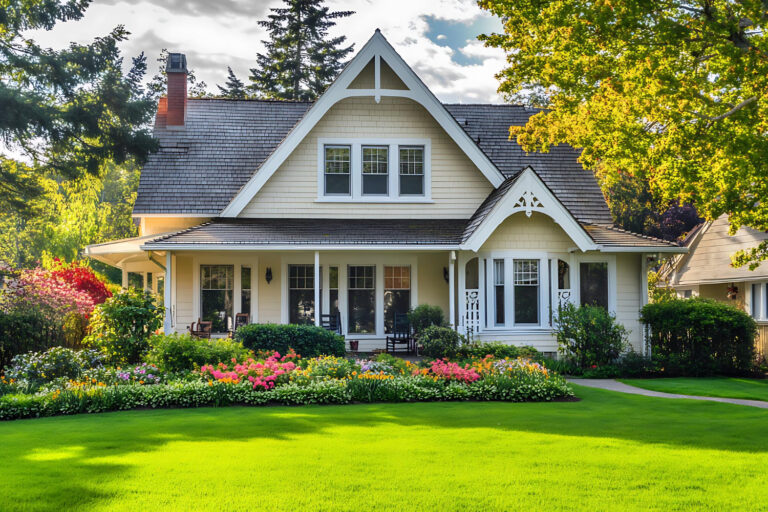Soft Washing a Roof is the Key to Roof Longevity!(2024)
The Comprehensive Guide to Soft Washing a Roof
Maintaining a clean and well-preserved roof is not just about the aesthetics of your home; it's about its longevity. Soft washing, one of the most effective and safe methods for roof cleaning, plays a crucial role in this. This article will delve into the nuances of soft washing a roof, discussing the techniques, benefits, and best practices and integrating critical terms related to this process.
What is Soft Washing?
Soft washing is a cleaning method that uses low-pressure water combined with specialized cleaning solutions to remove dirt, algae, mildew, moss, and other organic stains from roofs and other surfaces. Unlike high-pressure washing, soft washing is gentle and prevents damage to the roof materials
Benefits of Soft Washing
- Prevents Damage: High-pressure washing can strip away protective layers of roofing materials, causing damage. On the other hand, using a roof soft wash system ensures that shingles and tiles remain intact, thereby preventing potentially costly repairs.
- Long-lasting Results: The cleaning solutions used in soft washing clean the surface and kill the spores and roots of algae and moss, significantly delaying their regrowth. This ensures that your roof stays clean and beautiful for longer, making your investment in soft washing worthwhile.
- Enhanced Curb Appeal: Regular soft washing can significantly improve the appearance of your home by removing unsightly stains and discoloration.
The Soft Washing Process
Preparation
Before beginning the soft washing process, it is crucial to prepare the area. This includes:
- Roof Cleaning Safety Gear: Ensuring all necessary protective equipment is worn, such as gloves, eye protection, respirators, and suits to protect from chemical exposure.
- Plant Protection: Covering plants and landscaping near the roof to protect them from runoff.
- Weather Conditions: Checking the weather forecast to ensure dry conditions for optimal cleaning and drying.
Cleaning Solutions and Equipment
Soft washing relies on a variety of roof-cleaning chemicals and equipment:
- Roof Cleaning Chemicals: Commonly used chemicals include sodium hypochlorite and sodium percarbonate, which kill and remove organic growth.
- Roof Cleaning Equipment: This includes specialized low-pressure pumps, hoses, nozzles, and soft-washing wands.
Application
- Detergent and Surfactant Application: A cleaning solution is applied to the roof using a low-pressure sprayer. This solution typically includes detergents and surfactants that help to break down dirt and organic matter.
- Biocide Treatment: A biocide is often included in the mixture to kill algae, moss, and mildew at the root level, preventing future growth.
- Dwell Time: The solution is left on the roof for a specified time to allow it to work effectively. This step is crucial for the chemicals to break down and kill the organic material.
- Rinsing: The roof is then rinsed with low-pressure water to remove the cleaning solution and dislodged dirt and organic matter.
Post-Cleaning
After the soft washing process, it is essential to:
- Inspect the Roof: Check for any remaining stains or areas requiring a second application.
- Clean Up: Properly dispose of any waste and rinse any plants or areas that may have come into contact with the cleaning solution.
Choosing the Right Roof Cleaning Service
Hiring a professional roof cleaning service ensures the job is done correctly and safely. When selecting a service:
- Check Credentials: Ensure the company has the necessary certifications and training in roof cleaning techniques.
- Get Quotes: Obtain multiple roof cleaning quotes to compare prices and services.
- Read Reviews: Look for reviews and testimonials from previous customers to gauge the company’s reliability and quality of work.
Maintenance and Frequency
Regular maintenance is not just a suggestion but a responsibility you, as a homeowner or property manager, have towards your roof. It is vital to preserving the cleanliness and integrity of your roof. The frequency of cleaning depends on factors such as the local climate, surrounding vegetation, and the type of roofing material. Generally, it is recommended to softwash a roof every two to three years.
Environmental Considerations
Soft washing, when done correctly, can be environmentally friendly:
- Biodegradable Products: Using eco-friendly cleaning solutions helps minimize the environmental impact.
- Runoff Management: Proper techniques should be employed to manage and dispose of runoff, ensuring that harmful chemicals do not enter the ecosystem.
- Water Conservation: Efficient water use during cleaning is crucial for conserving this vital resource.
Common Mistakes to Avoid
- Using High Pressure: High-pressure washing can damage roofing materials and is not recommended for soft washing.
- Incorrect Chemical Mixtures: Using the wrong chemical concentrations can either be ineffective or cause damage to the roof.
- Inadequate Dwell Time: Not allowing the cleaning solution enough time to work can result in poor cleaning results.
Conclusion
Soft washing is an effective, safe, and environmentally friendly method for maintaining the cleanliness and integrity of your roof. By understanding the process, choosing the right professionals, and adhering to regular maintenance schedules, you can ensure your roof remains in excellent condition for years. Embrace soft washing to protect your investment and enhance the beauty of your home.
Ready to experience the benefits of soft washing for your roof? For expert assistance and a free quote, contact Softwash Your Roof at (786) 876-3505 or email john@softwashyourroof.com. Please let the professionals handle your roof cleaning needs with precision and care.









8 Comments
Comments are closed.